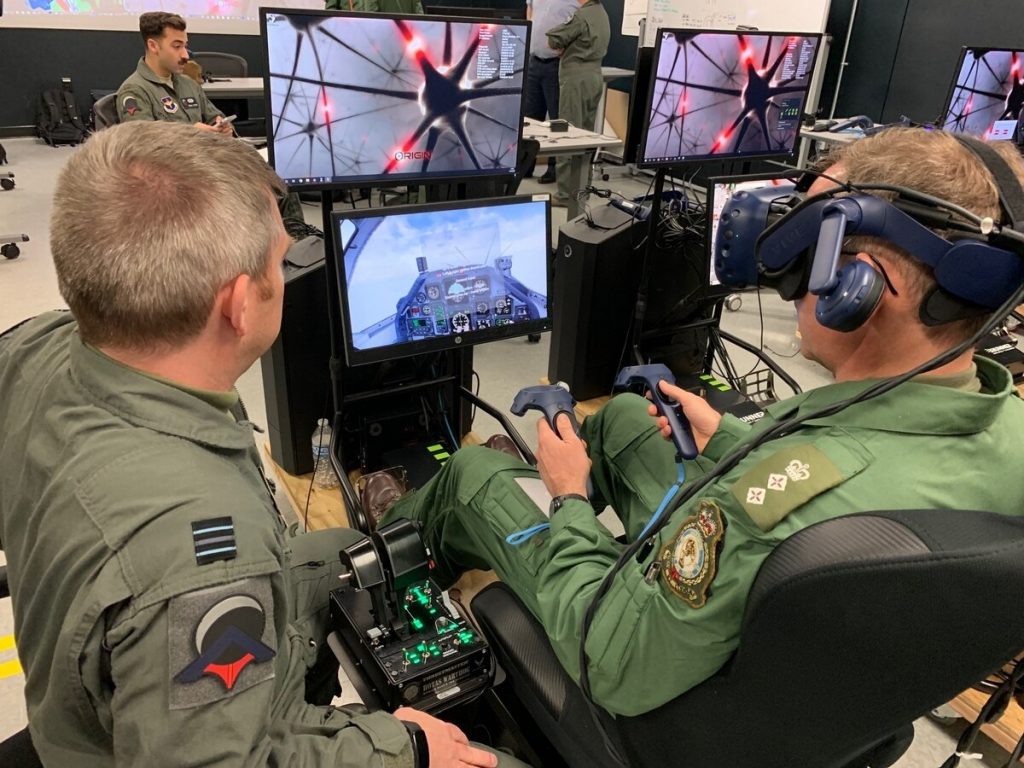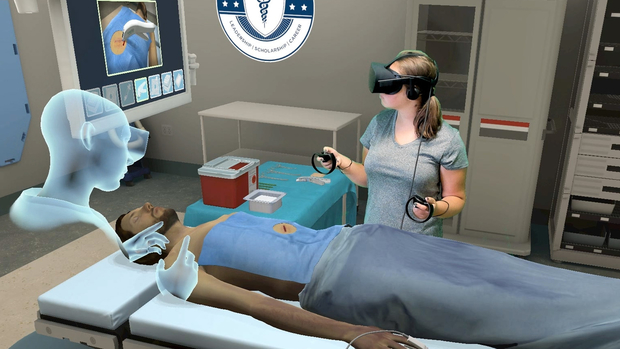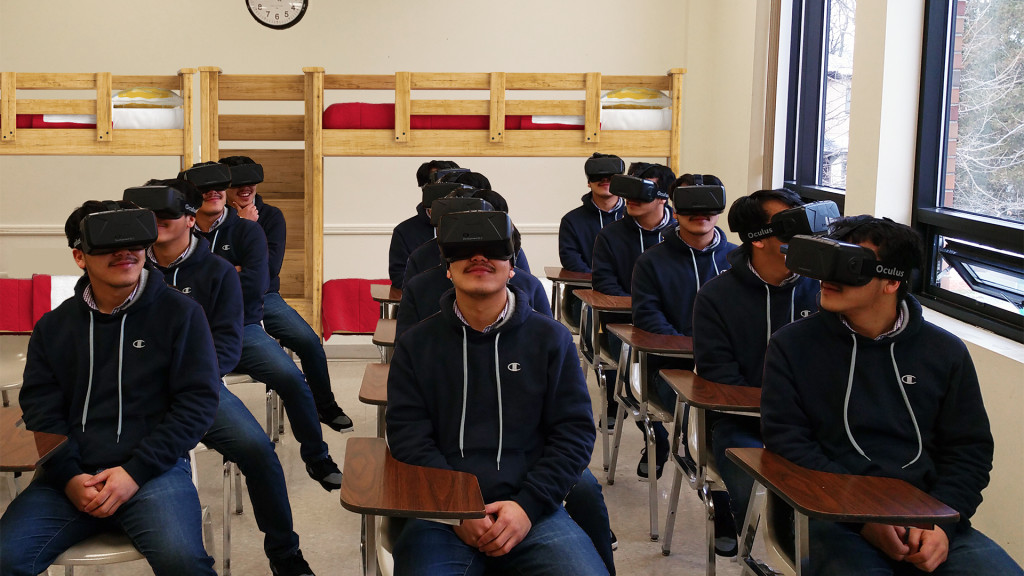When we started filming and selling Virtual Reality training (VR) we, like most newbies to VR, lacked a clear understanding of its advantages and disadvantages over regular video for training. Not only did we lack know-how and experience but also the state of the technique was immature at the time. Therefore, it was hard to assess what was feasible both technically and financially.
Currently, the possibilities, limitations and feasibility of Virtual Reality Training applications are much clearer. The technique has evolved to become easier to create, easier to operate and much more cost efficient.
However, whether you are up to date with state of the art VR techniques or not, it can still be confusing when to use VR. And, maybe even more important, when not to use VR. To try and make this clearer, this article provides the ‘RICE’ model to determine when using VR makes sense.
RICE Model for Virtual Reality training
To help decide when it is useful or efficient to use VR we can consult the RICE model. RICE is an abbreviation for the words Risky, Infrequently, Costly and Experience. When deciding whether to use VR for training purposes or not, meeting certain RICE model criteria is a valuable metric in a decision process. As a rule of thumb, when at least two of the RICE criteria are met then it could prove beneficial for businesses to use VR.
We provide an in-depth look at all the aspects of the model. We illustrate these with examples from our own work as well as using cases from other companies.
Risky
Risky situations provide a challenge when giving training in a high risk environment. The training is oftentimes absolutely essential but risks can sometimes be high. A good example is a pilot. You obviously don’t want a pilot to just start flying a plane and learn as he goes, there is too much risk involved.
This is why VR, in this case, can serve as an efficient alternative to actually flying a plane as well as an enormously expensive simulator. VR takes the risk away whilst emmersing a pilot in an extremely realistic training.

Our company, Smart VR Lab, has also filmed several surgical procedures in 360 video. Trainees have to see how surgery is performed to finish their education thus they have to be present at a certain number of procedures. However, with too many door openings the chances of an infection of the patient increases dramatically. So to prevent patients from getting infected while still allowing spectators to experience the operation room, 360 video of a surgery can be a solution. Because it allows the knowledge transfer from the surgeon to the students without the hazard of infection.
Ideally, a virtual surgery could even be performed by using VR with certain enhancements. This would not only eliminate risks for patients but it would also prepare students for the real deal later on.

Infrequently
Situations that occur rarely but which are vital to experience for employees can be trained in VR. When you recreate and train these situations, everyone knows what to do when it actually happens. For example, dealing with aggressive clients. For most staff, this, fortunately, does not happen often. Especially during the few hours of training new employees receive. Therefore, it is difficult to teach people how to respond in such situations. Think about an angry retail customer that is displaying aggressive behavior. Employees that have received VR training can basically in a sense already live through a similar situation. That way they prepare better for this situation in real life.
To illustrate it with some of our work from the hospital again: certain procedures are very rare and they need to be performed perhaps only a few times a year. It is obviously very important for students to see and learn about these procedures but they then have to coincide with the physical presence of the doctor in the hospital. Given that each student only has a few months of training during which they only attend 8 or 9 hours a day, the chance that such a rare procedure is available can be very slim. Therefore, a VR video can help transfer this knowledge.
Costly situations
Costly situations can be divided into two different categories. Situations with a high fixed cost and with a high marginal cost.
First, we will look at situations with very high fixed costs where VR could cut costs.
When designing a new product, a prototype is usually very expensive. When creating the first prototype in VR, engineers can test the physical dimensions of the product without having to actually build it. For example, it is incredibly convenient to test control of a new crane cockpit in real-time, using virtual reality, instead of building a prototype. You can change positions of any handle, switch, remove or add any button. Test the new setup on multiple operators experienced as well as novice and integrate their feedback, before building the first physical model.
Secondly, there are situations which do not have very high fixed costs but have to be done on such a large scale that the total costs do end up very high. In such a case, every variable cost reduction per training can add up to a massive difference.

For example, if you want to train employees for aggression training with an actor. To rent an actor costs around €1000,- a day. If you manage to train 50 employees in one day it equals to €20,- per employee. This is not very high. But when you have to do this for 1000 employees once every year, the costs rise quickly. If you can reduce the variable costs per trainee by creating an (interactive) VR scenario, you save a lot of money. As a bonus, the VR scenario can modify and improve along the way.
Experience
Last but certainly not least: experience. Virtual Reality is extremely powerful in allowing people to experience situations from their own perspective or from others people’s perspective. So when experiencing something involving stress and other emotions, VR really comes into play as a helpful and unique tool.
In VR it is easy to simulate an escape due to fire hazard. Even though this is trained by most companies every few months by ringing the alarm, VR can make a huge difference. Just think about the difference between imagining that a room is on fire and being in a room that is on fire. Being there is a much more realistic experience that allows you to better assess how people react to stressful circumstances. And with VR you feel that you are in trouble.
Another example briefly discussed before was dealing with aggression. If somebody is yelling at you in your face in VR, trainees react differently than when given a hypothetical example. An actor could give the experience as well. But as mentioned before, this can amount to a huge expense.
A great example of the experience factor in VR is Enliven Media. This is a Dutch company that uses VR to enrich the world with more awareness and empathy, by empowering people to expand their understanding of people around the world.
One of their experiences allows parents to experience the impact of domestic violence on their children. Viewers can step inside the world of a 7-year-old and experience domestic abuse and aggression. This can be used to train professionals, parents and students.
The strength of the above mentioned VR experiences is that it is impossible to witness these events in real life. You can not put somebody in a burning room and you can never experience domestic violence from the perspective of a child. With VR the impossible becomes possible.
Conclusion
Hopefully the RICE Model helps you in seeing the opportunities that VR technology brings while guarding you from falling down its many pitfalls. For consultancy, 360 degree video and 3D projects, please contact us.
Roeland den Ouden
0031640326650

